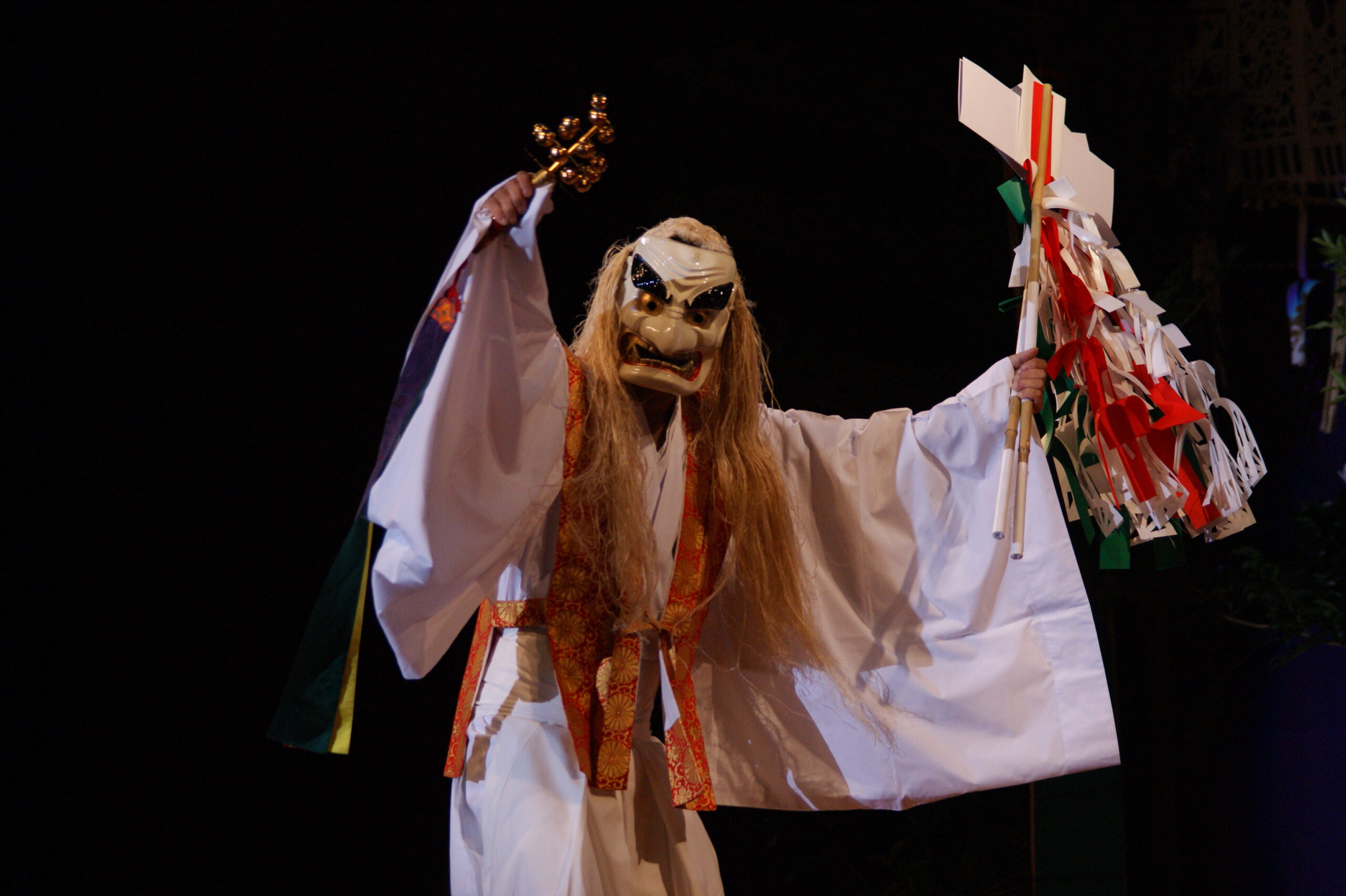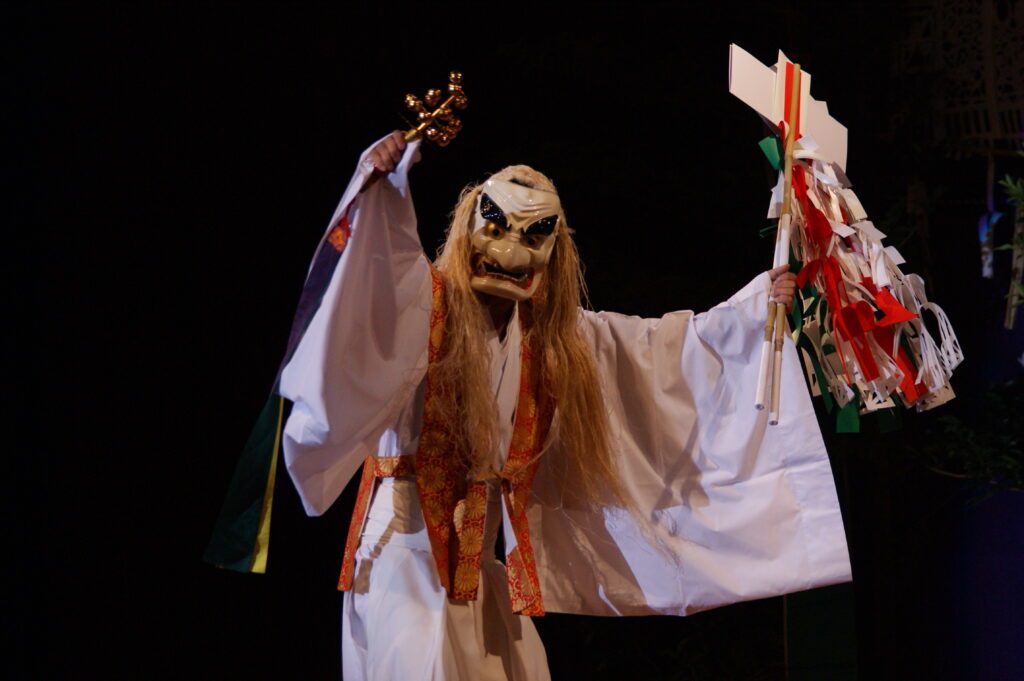Summary, Takachiho Yokagura

Yokagura at Takachiho
When the winter months roll in and most cities tuck in to brace for the cold, Takachiho’s residents are instead in the midst of planning for a local custom that traces back well over eight hundred years:yokagura, nighttime kagura.
Yokagura is a Shinto ritual in the form of a theatrical dance that is performed in as many as twenty villages in the Takachiho region between the months of November and February. From dusk until dawn, kagura performers called hosha enact thirty-three highly specialized performances dedicated to local earth kami deities, to give thanks after the harvest and to pray for bountiful fields the following year.
For the people of Takachiho, this is a sacred ceremony that brings humans and kami deities together for a night of merriment. Accompanied by taiko drums, ringing bells, and rhythmic singing, the masked hosha performers serve as vessels for deities. Neighbors gather to watch, eat, and drink in the presence of these various mythical deities as they turn and shift in intricate patterns on the sacred kagura stage. During this ceremony, even visitors are considered kindred.
This custom has strong ties to local culture. The various communities in the Takachiho area each have their own kagura specialties, leading to differences small and large in the style and order of performances as well as the costumes, decorations, and audience etiquette. Takachiho Yokagura was designated a significant intangible folk cultural asset of Japan in 1978.

